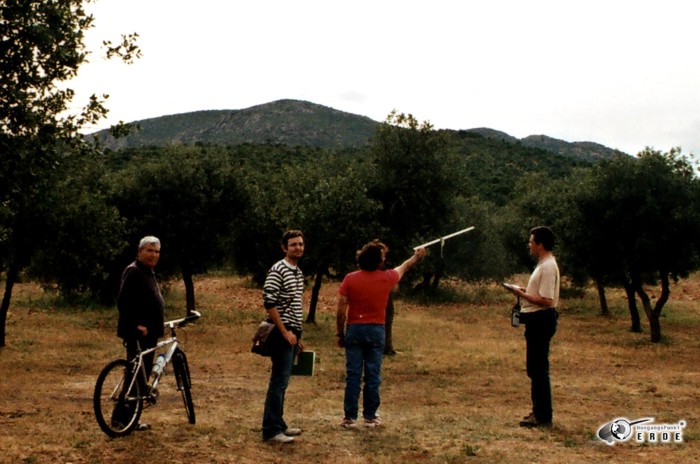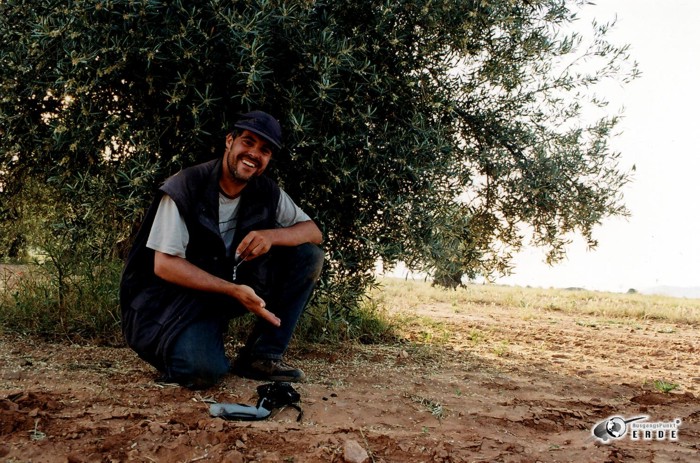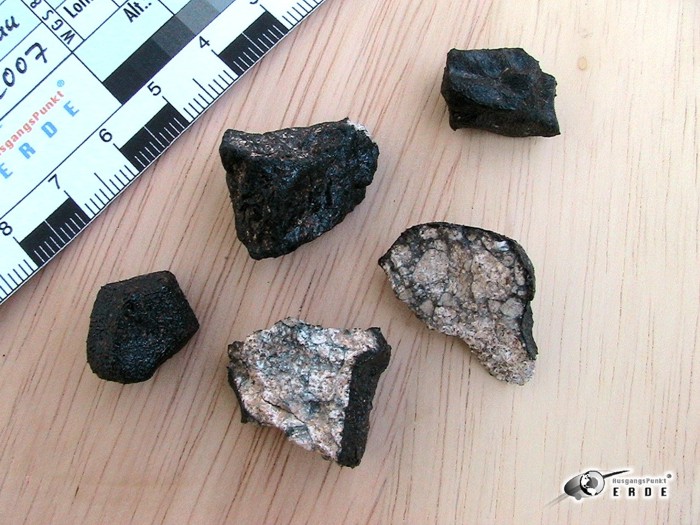| ||||
| |||||||||
| |||||||||||||||||||||||||||||||||||||||||||||||||||||||||||||||||||||||||||||||||||||||||||||||||||||||||||||||||||||
| |||||||||||||||||||||||||||||||||||||||||||||||||||||||||||||||||||||||||||||||||||||||||||||||||||||||||||||||||||||
"La Mancha" meteorite event (labelling is not official)On 10. of May 2007 around 8.00 pm local time the central Iberian Peninsula was flown over by an impressive fireball which was presenting explosions and brilliances with an intermediate luminosity between Sun and Moon. After few minutes the outbreak, which was produced during the fragmentation of the meteoroid in the atmosphere, could be heard from several Spanish provinces. The entrance of this spectacular bolide was observed widely from the central Peninsula and even from provinces so far away like Seville and Barcelona. In particular the fireball was perfectly visible from the provinces of Albacete, Ciudad Real, Cuenca, Madrid, Murcia, Malaga, Seville and Toledo. It was an so impressive celestial phenomenon that it caused great alarm and the emergency stations even were overloaded by calls of the witnesses few minutes after the appearance. The first collecting informations we got thanks to official website of the Spanish Meteor Network (SPMN). This bolide produced intense explosions and vibrations in the region of La Mancha in Central Spain. After that on the sky there was an appearance of a meteor cloud, which was formed like a double helix. At the end of this cloud the meteoroid completely had burst and the eye witnesses could see a falling debrital cloud. Thomas Grau was on location from 26. May and was interviewing the witnesses and so he could determine the approximate drop area. On 3. June 2007 he found by accident the first 5,7 g unmagnetic specimen of until now 18 known meteorites. He moved there in an area, which he had calculated and fixed before as the drop area of the meteorites. This area was a square of 5 x 5 km. Up to the end of the recovery expedition he found 4 more meteorites, which were recovered in the last two days around the finding location of the first one by systematic search. These specimen even are very small. The meteorite event was presented at the METEOROIDS 2007 conference in Barcelona for the first time. One could see the first five meteorites also at the Ensisheim Show. At present a TKW of approx. 220g is found. The labelling of the fall "La Mancha" is a provisional and internal name. Our own Examinations are not completed, but in our opinion the meteoroid entered the atmosphere very flat and deep and there was no fragmentation until then. Even exactly at the end of the luminous flight phase and without a light flash the witnesses were reporting the beginning of a heavy fragmentation phase, which was only observed as a kind of white explosion cloud. From these cloud emanated many filigree “condensation trails”. These white cloud developed dynamically even still after the appearance of the hypersonic boom.We do not expect large main masses, even if the intruder was already pretty voluminous. All the “trails” head downward with an angle of minimum 45°, while the fireball and the pretty short ablation cloud (which was longer visible) had shown a more flat angle ( it seems to be nearly horizontally) The witnesses had no problems to indicate the direction, but we could clearly detect with our selfmade "altitude-angle instrument", that all witnesses gave too low altitude values. Nobody was using the zenith, even though the location of the fireball at three witnesses was so close and must gone from north to south across the zenith! Very interesting statements were made by witnesses about the sonic boom, so that we can cognize only with these informations, what happened successively. The sound waves generated a ca. 10 s persistent earth quake like vibration, which could notice all people even in buildings, when the intruder passed the villages and towns. But also the meteor cloud by itself is apparently something exceptionally. It had a shape like a corkscrew and was rotating around its direction vector. At the end occurred a plane head, which was definitely hunched down. Basically it is assumed (so we suppose) that the material is of planetary regolith and in particular represent an Eucrit-Breccia. The material looks apparently similar to the fall events of BÉRÉBA (1924, Burkina Faso) ), CAMEL DONGA (1984, Western Australia) and the find of BINDA (1912, Australia). The scientific examinations of the material are only on their way. At present we go for the noble gase - radionuclid analysis and the metal isotopes. We thank the Spanish Meteor Network and especially Prof. Dr. Jordi Llorca and Prof. Dr. Josep Trigo-Rodriguez for their helpful support and cooperation. Thomas and fall witnesses during an interview.
Lucky Thomas at an "impact" side - it´s not an olive, it´s a meteorite!
The first Five of "La Mancha" Additional informations: http://www.spmn.uji.es/ESP/noveda70.html http://www.20minutos.es/noticia/245915/0/meterioto/fragmentos/espana/ | |||||||||||||||||||||||||||||||||||||||||||||||||||||||||||||||||||||||||||||||||||||||||||||||||||||||||||||||||||||
Home Page | Einführung | Vorwort | Ziele | Aktivitäten | Kontakt | Partner
| ||






